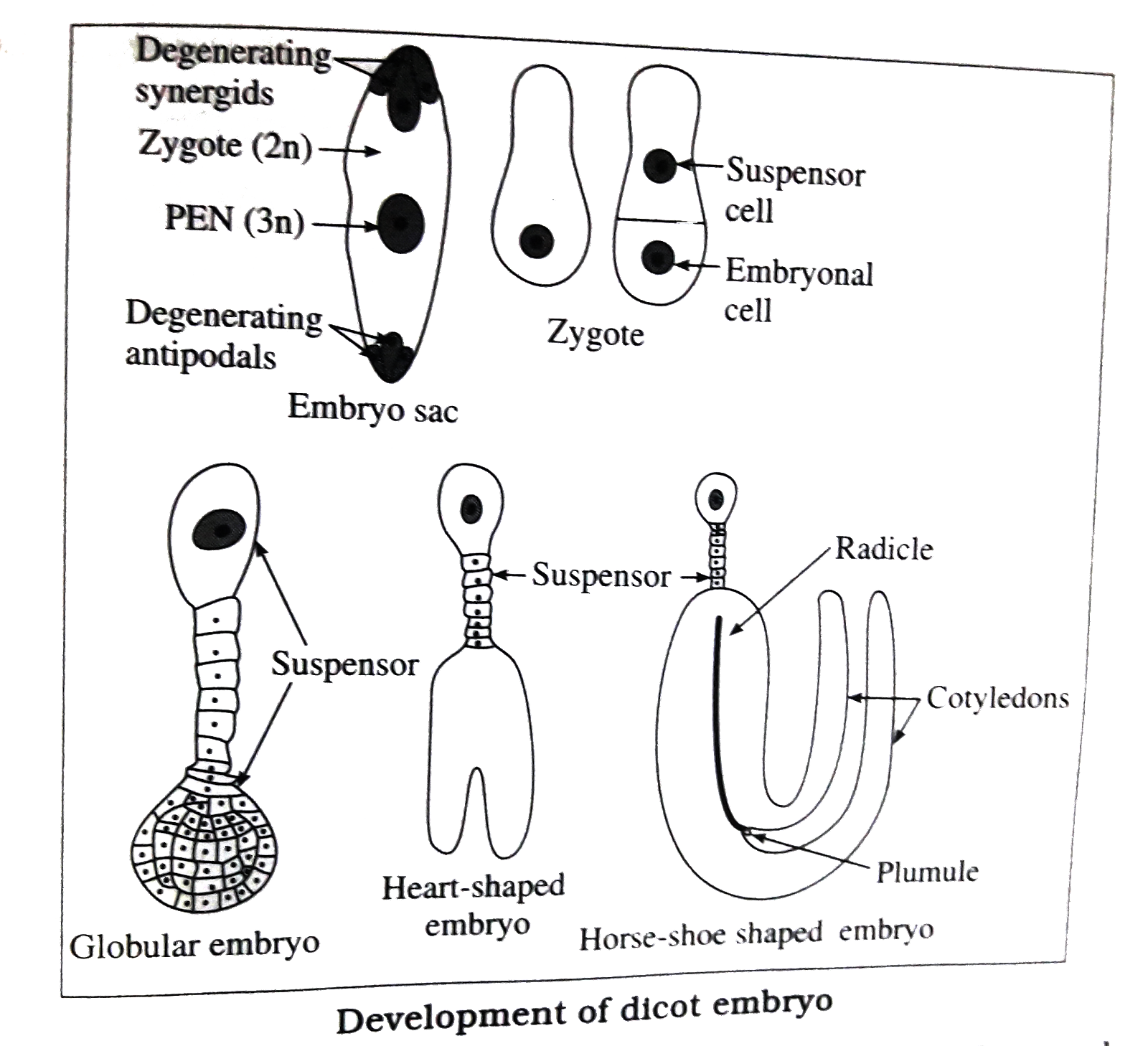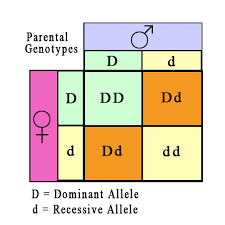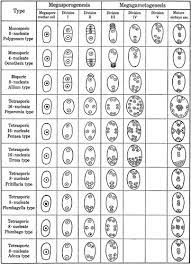EMBRYOGENY BY DICOTYLEDON (Ceratocephalus falcatus)
EMBRYOGENY BY DICOTYLEDON
Based on the plane of division of the apical cell in the
2-celled proembryo, and the contribution of the basal cell (cb) and the
apical cell (ca) in the formation of embryo proper, five chief types of
embryogeny have been recognized by Maheshwari (1950)
A. The apical cell of the 2-celled proembryo divides
longitudinally
(1) The basal cell plays only a minor role or none in the
subsequent development of the embryo proper Crucifer Type or Onagrad
Type (eg., Annonaceae, Brassicaceae, Onagraceae, Pedaliaceae, Ranunculaceae.
Scrophulariaceae)
(2) The basal cell and apical cell both contribute to the development of embryo - Asterad Type (eg. Asteraceae, Balsaminaceae. Violaceae, Vitaceae)
B. The apical cell of the 2-celled proembryo divides
transversely
i- The basal cell plays only a minor role or none in the
subsequent development of the embryo proper (3) The basal cell usually forms a
suspensor - Solanad Type (eg., Campanulaceae, Linaceae,
Solanaceae, Theaceae).
(4) The basal cell undergoes no further division, and the
suspensor, if present, is always derived from the apical cell – Caryophyllad
Type (eg. Caryophyllaceae, Crassulaceae, Haloragaceae)
ii- (5) The basal and apical cells both contribute to the
development of embryo - Chenopodiad Type (eg. Boraginaceae, Chenopodiaceae).
These five types of embryogeny refer to those plants where
first division of the zygote is transverse, so that an apical cell and a basal
cell are formed. Johansen (1950) has recognized a sixth type of embryogeny,
called Piperad Type, which includes those cases where first
division of the zygote is vertical (Loranthaceae, Piperaceae).
Often the type of embryogeny is constant throughout a
family. Rarely, however, the same species may show more than one well
established trend of embryo development For example, in Anemone rivularis,
Solanad Type as well as Crucifer Type of embryogeny
occur regularly.
To illustrate complete development of a dicotyledonous embryo the work of Bhandari and Asnani (1968) on Ceratocephalus falcatus (Ranunculaceae) is described. In this species the embryogeny is of the Onagrad Type.
Development and structure of Ceratocephalus falcatus:
The zygote divides transversely, forming a small apical cell (ca) and a large basal cell. Cell cb divides transversely, forming two superposed cells ci and m, and cell ca undergoes a vertical division giving rise to two juxtaposed cells Thus, a T-shaped, 4-celled proembryo is formed. Of the two daughter cells of cb, cell ci divides transversely giving rise to n and n'. These two cells divide further forming a linear row of 3 or 4-celled suspensor Cell m and its derivatives divide by a vertical division to form 4-6 cells. Oblique periclinal divisions in each of these cells result in an inner set of cells (the initials of root apex) and an outer set of cells (the initials of root cap, In the meantime the daughter cells of the apical cell divide by another vertical division at right angles to the first division, forming a quadrant q. A transverse division of the quadrant results in an ant arranged in two tiers (l, l₁,) of four cells each. Vertical divisions in tiers, I and I, give rise to a globular proembryo. Periclinal divisions in the peripheral cells of the globular proembryo demarcate a single layered dermatogen, the future epidermis. Cells of the tier I differentiate the initials of plumule and the two cotyledons. The latter flank the former on either side. Growth in the cotyledonary zones is much faster than in the plumular zone. As a result, in the mature embryo the plumule is enclosed at the base of the two cotyledons. The tier l₁, finally forms the hypocotyl-radicle axis.





Comments